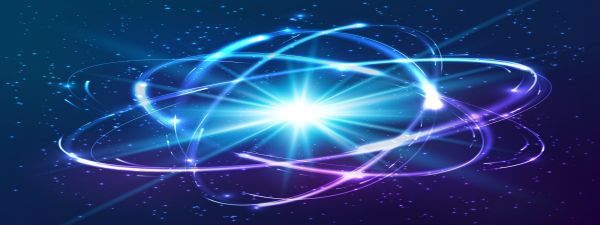Physics of tachyon
A tachyon or tachyon particle is a hypothetical particle that is always faster than light. Most physicists believe that particles faster than light cannot exist because they do not comply with physical laws. If such particles existed, they could be used to assemble tachyon antithelephony – a hypothetical device that makes it possible to communicate with the past (with previous events). As an example, we can communicate with man on Earth and in a spaceship that moves away from Earth. He on the spaceship sends a message to a person on Earth. The person on earth who responds to this message arrives before the original message from a person in the universe.
Tachyons were first designed by physicist Arnold Sommerfeld, and named after Gerald Feinberg. The word Tachyon is derived from the Greek takhus which means fast, instant.
One suggestion was that tachyons can be produced by collision of high energy particles. Tachyon studies have been conducted in cosmic rays (radiation). Cosmic rays strike the Earth’s high-energy atmosphere, some with a speed of almost 99.99% as the speed of light, creating a clash with the molecules in the atmosphere. The particles formed by this collision interact with the air to form particles known as the cosmic spray phenomenon.
Tachyons have those unique features that they lose speed if they lose energy. Consequently, when they gain energy they slow down. The slowest possible speed for tachyons is the speed of light. Tachyons seem to deny causality, that is, the relationship between two events: cause and effect. If tachyons exist, then the theory of special relativity seems wrong. Tachyons can be attributed to properties such as normal matter, spin: the intrinsic relativistic property of an electron, and also an antitachyon.
Some physicists dealt with the concept of tachyons from the early 1960s until the mid-1970s, and only some conducted an experiment to capture tachyons in cosmic showers. Ida consists of the idea that high-energy cosmic ray particles collide with air molecules in the upper atmosphere, creating secondary sprays of billions of molecules, some of which we can target with the instruments we have on Earth. It is quite possible that tachyons could be formed by collisions at these altitudes more than 20 km above the ground.
In 1973, a pair of Australian scientists Roger Clay and Philip Crouch confirmed the successful capture of tachyon, but no one was able to repeat this claim. Some of the tachyons could be observed 60 microseconds before the main secondary spray (which consists of particles moving below the speed of light). In 2011, CERN measured a particle called neutrino velocity higher than the speed of light. However, these measurements still need to be confirmed. The future of science can bring us more light on this exciting topic, which tachyon is undoubtedly.
Learn more about process of tachyonization
See more resources at official -> Planet Tachyon page
Resources
http://scienceworld.wolfram.com/physics/Tachyon.html









